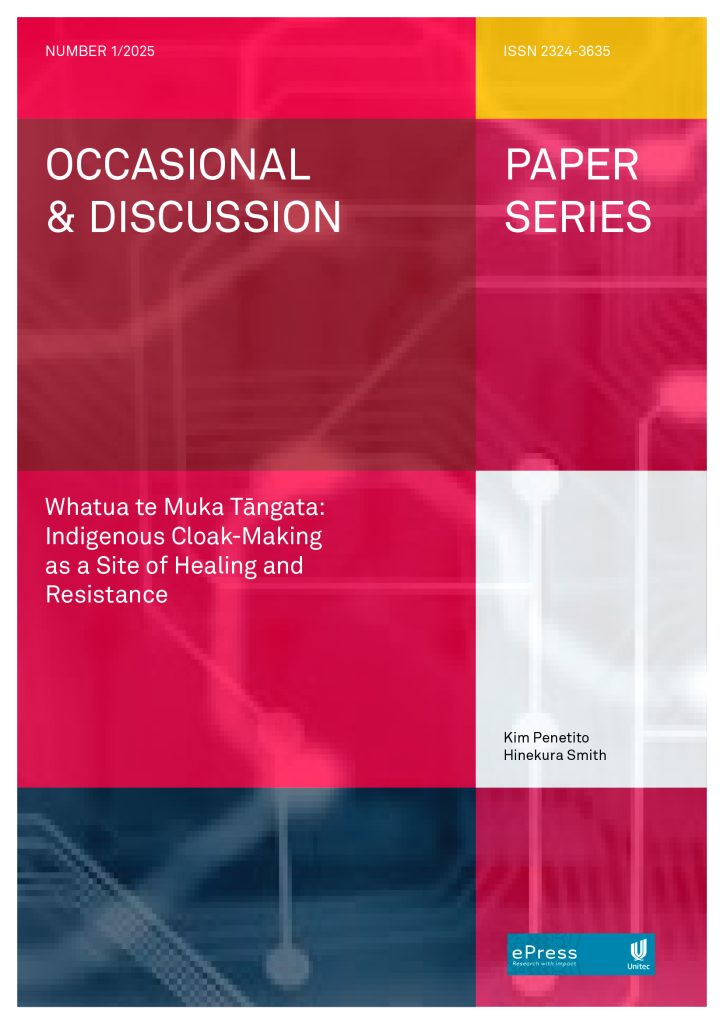This article explores a collaborative arts-research exchange between Māori and Aboriginal women cloak-makers, positioning traditional cloaking practices as powerful sites of healing, resistance and cultural regeneration. Grounded in Kaupapa Māori and Whatuora (H. Smith, 2017; 2019) methodologies, the article weaves together the experiences of Māori weavers and Aboriginal possum-skin cloak-makers who came together on each other’s lands to share, learn and co-create. Through reciprocal exchange and community-engaged practice, three Aboriginal women came to wānanga in Aotearoa in April 2024, with two Māori women travelling to Victoria in Australia in the following month to experience their learning circles. The women revitalised intergenerational knowledge systems, language and creative pedagogies grounded in Indigenous maternities. Cloak-making processes serve not only as a tangible act of creation but as a metaphor for the binding of generations, reconnection to whenua (land), and reclamation of identity. The culminating collaborative cloak, Kahu–Kooramookyan, embodies the cultural narratives, relational ethics and artistic expressions that resonate across Māori and Aboriginal epistemologies. This article forwards cloaking as an artivism – activist arts practice – that nurtures Indigenous wellbeing and acts as a decolonising intervention, reconnecting communities through shared values of aroha, reciprocity and resistance. As ancestral knowledge is reactivated through hands, fibres and ceremony, cloak-making emerges as an educational, spiritual and political act of Indigenous sovereignty and resurgence.
Penetito, K. & Smith, H. (2025). Whatua te Muka Tāngata: Indigenous Cloak-Making as a Site of Healing and Resistance. Occasional and Discussion Paper 1/2025. ePress, Unitec.
https://doi.org/10.34074/ocds.112
Authors: Kim Penetito and Hinekura Smith
ISSN: 2324-3635
Published: 01.10.2025
